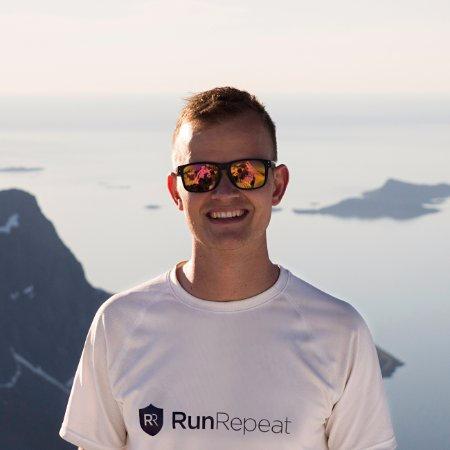Les chaussures de course chères ne sont pas meilleures que celles plus abordables (Étude)
Based on 134,867 reviews of 391 running shoes from 24 different brands, this study compares the list prices of running shoes with their ratings. The main conclusion is that expensive running shoes are no better than more affordable ones. In fact, affordable running shoes are rated higher than expensive ones. You are free to use any content (graphics, comments, etc.) provided you reference this original source. For interviews, please contact lina@runrepeat.com / +1 817 945 66 06.
First, the conclusions
Based on 134,867 reviews of 391 running shoes from 24 different brands:
- The higher the listed prices go, the lower the ratings the running shoes get.
- The 10 most expensive running shoes (average price: €157) are rated 8.1% worse than the 10 least expensive (average price: €53).
- Specialised running brands are rated 2.8% better than major sports brands.
- The top three highest rated brands are: #1 Skechers, #2 Saucony and 3# Vibram FiveFingers, while the three worst rated are #22 New Balance, 23# Adidas and 24# Reebok.
- The top three cheapest brands are: #1 Skechers, #2 Vivobarefoot and #3 PUMA, while the three most expensive brands are 22# On, #23 Newton and #24 Hoka.
Background information
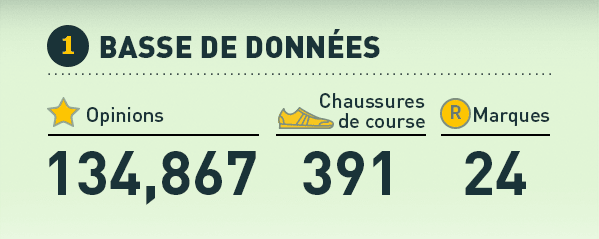
RunRepeat.com is a platform free of all advertising fees and costs, maintained by a community of runners who review running shoes on the platform. Our mission is to create transparency in the running shoe market. We do this by providing runners with free access to aggregated information from reviews, rankings and unique ways to compare running shoes. It has over 100,000 user reviews and pursues the vision of creating transparency in the running shoe market by comparing reviews, offering free ranking lists as well as unique comparison tools. We are 100% independent, and do not promote specific brands or stores ourselves, but let the community judge which running shoes are good and which should be avoided. “We did this study to spread the idea that 'the higher the price, the greater the value' does not apply to running shoes,” says Jens Jakob Andersen, founder of RunRepeat.com. He says: “Brands have strong incentives to promote premium running shoes, but our study clearly shows that runners who buy more expensive running shoes are less satisfied than runners who buy affordable or affordable running shoes. mid-range.” the greater the value' does not apply to running shoes,” says Jens Jakob Andersen, founder of RunRepeat.com. He says: “Brands have strong incentives to promote premium running shoes, but our study clearly shows that runners who buy more expensive running shoes are less satisfied than runners who buy affordable or affordable running shoes. mid-range.” the greater the value' does not apply to running shoes,” says Jens Jakob Andersen, founder of RunRepeat.com. He says: “Brands have strong incentives to promote premium running shoes, but our study clearly shows that runners who buy more expensive running shoes are less satisfied than runners who buy affordable or affordable running shoes. mid-range.”
Methodology
The following process is the foundation of our results:
- We've compiled 134,867 user reviews of 391 running shoes on RunRepeat.
- We have compiled the displayed prices of 24 brands on the same shoes.
- We performed a regression on these two variables.
Results
The results are separated into two categories:
- Shoe-specific results
- Brand-specific results
Running Shoe Specific: Comparison of 391 Running Shoes
Below is a curve of 391 running shoes in two parameters: the displayed price in US dollars on the x-axis and the average user rating from 0 to 1000 on the y-axis. The data is plotted randomly, which is the heart of our conclusion – There is no statistical correlation between the list price of a shoe and how high its rating is. In fact, if you do a regression analysis, the data suggests that cheaper shoes are rated higher than expensive ones.
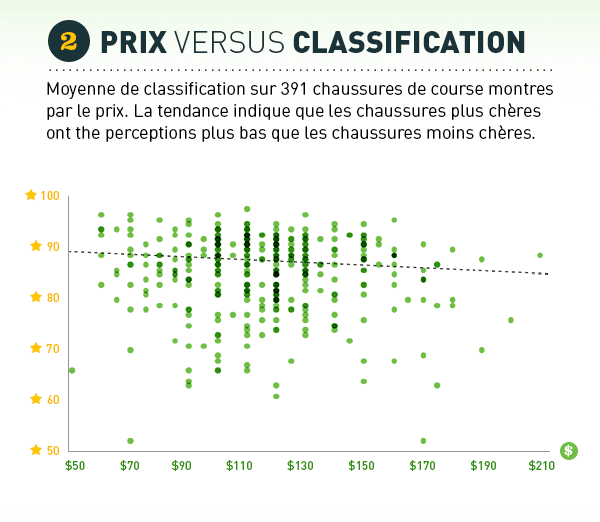
We dug deeper and looked at the 10 most expensive running shoes and the 10 cheapest running shoes. In this case the results are surprising. The 10 cheapest shoes had a list price of $61 with an average user ranking score of 86 out of 100.If you look at our top rated running shoes ranking list, you'll see that only 18.9% of the 139 running shoes are rated better than the top 10 most affordable, on average. In other words, the average running shoe is rated lower than the affordable ones. Also, if you look at the top 10 most expensive running shoes, which are supposed to be 'top premium' running shoes, runners are not satisfied to the same degree as with the cheaper running shoes. With a 3x higher price, premium running shoes make runners 8.1% less satisfied, and 6.0% less satisfied if you compare it with the average rating of 391 running shoes. “People buy running shoes three times as expensive to be 8% less satisfied.” says Jens Jakob Andersen, founder and CEO of RunRepeat.com.
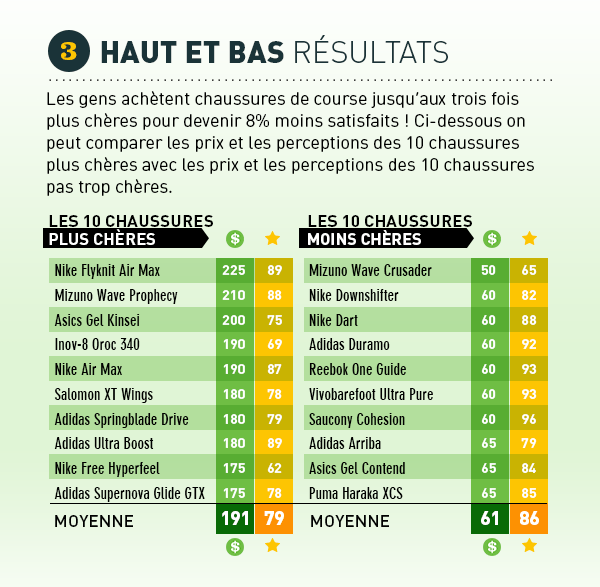
We even reviewed the top 30 running shoes and the results are the same. Expensive running shoes get lower ratings: “Runners are less satisfied with premium running shoes. I am aware that higher prices raise higher expectations, but in no way should the price reflect the quality of the product and therefore the quotations.” says Jens Jakob.
Brand-Specific: A Comparison of 24 Running Shoe Brands
In this section we focus on the division of running shoe brands, not specific models, as previously discussed. This is not to promote a specific performing brand. In this study, we have no other incentive than to share knowledge with consumers. Below you will find a chart plotting the average quote (the y-axis) against the displayed price in US dollars (the x-axis). As with specific running shoe models, the higher the listed price, the lower the listing. In fact, if you do a correlation, it suggests that a $50 rise in the displayed price would cause a 1.4 lower average.

Some brands are really good at marketing, some are really good at creating cool running shoes, and some are really good at combining really good marketing with really good product creation. The chart below illustrates the average user rating for each of the 24 running shoe brands. “We expected specialist running brands to outperform standard sports brands, but looking at the data, there is only a small difference. Specialist running brands perform 2.8% better than general sports brands.” says Jens Jakob Andersen. Also, the bar chart below illustrates the average price posted on 24 different shoe brands. There's nothing wrong with that 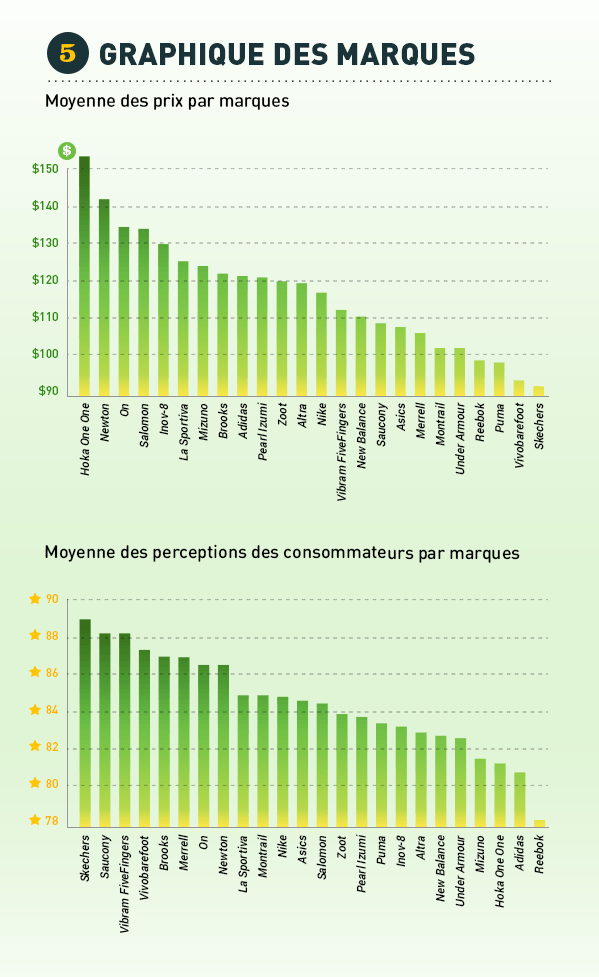
Potential biases that influence the results
No study is perfect. Here are some pitfalls of this study:
- It can be expected that if a runner buys expensive shoes, he will have greater demands on the quality of the shoes and therefore he will be disappointed more easily. It's true, the more you spend, the more you demand. However, the price displayed must reflect the requirements. If you spend more on running shoes, you will logically demand a better product.
- Reviews are provided by aggregator RunRepeat.com, which attracts a certain type of runner, which can skew the result (in either direction).
That being said, we still believe that our conclusion is a good one, and that potential biases had not influenced the data in any very significant way.
About the researchers:
Jens Jakob Andersen is the lead researcher behind the study. He is a former competitive runner and professor of statistics at Copenhagen Business School under Centre Head of the Department of Finance Dorte Kronborg. Today, he is the founder and CEO of RunRepeat.com. The study was assisted by Polish statistician Wojciech Fedyszyn and reviewed by dozens of experts before being published. The study was funded by RunRepeat.com. Disclaimer: No brand or other institution influenced us in any way to carry out this study. We did this in our research to create transparency in the running shoe market, not to promote high-performing running shoe brands. No brand even knows we did this study. You are free to use any content as long as you link to the original source. For interviews, please reach us at lina@runrepeat.com ,or see the contact page . Below you will find the full infographic. We're happy to share our raw data – if you're interested, join us.

